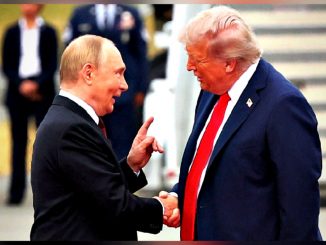
| Published June 4, 2025
Pakistan and China’s militaries are highly integrated and poised to continue threatening New Delhi’s position in multiple domains.
It is no news that China supported Pakistan with military hardware during the recent military confrontation with India. However, less discussed has been the support the constellation of Chinese satellites provided in terms of Intelligence, Surveillance, and Reconnaissance (ISR) to Islamabad, and how New Delhi countered it by mobilizing all its military and civilian assets in space.
China and Pakistan have forged a strategic partnership that increasingly challenges India’s regional security and geopolitical standing. Their collaboration spans military, technological, and economic domains, creating a multifaceted pressure on India.
Military and Technological Collaboration
China has been a primary supplier of military hardware to Pakistan, accounting for approximately 61% of Pakistan’s arms imports. This includes advanced systems like the Chengdu J-10C fighter jets, HQ-series air defense systems, and P-15 missiles. Notably, during recent conflicts, Pakistan employed these Chinese-made systems, providing China with real-time data on their performance against Indian forces equipped with Western and Israeli technology.
Beyond hardware, China’s support extends to space-based intelligence. During the latest India-Pakistan confrontation, China provided Pakistan with satellite-based Intelligence, Surveillance, and Reconnaissance (ISR) capabilities. This assistance enhanced Pakistan’s situational awareness and targeting precision. In response, India is working to expand its own satellite constellation, aiming to deploy 52 satellites over the next five years. However, challenges persist, as evidenced by the recent failure to position the NVS-02 satellite into its intended orbit .
Strategic Infrastructure and Economic Projects
The China-Pakistan Economic Corridor (CPEC), a $62 billion initiative, epitomizes the deepening ties between the two nations. CPEC includes the development of the Gwadar Port in Pakistan and infrastructure projects in regions like Gilgit-Baltistan and Azad Kashmir—areas contested by India. These developments not only bolster Pakistan’s economy but also provide China with strategic access to the Arabian Sea, circumventing maritime routes dominated by India. India views these projects as infringements on its sovereignty and strategic interests .
Geopolitical Implications
The China-Pakistan alliance poses a two-front challenge for India. While managing tensions along the Line of Control with Pakistan, India must also contend with China’s assertiveness along the Line of Actual Control. This dual pressure complicates India’s defense planning and resource allocation. Furthermore, China’s support for Pakistan in international forums often undermines India’s diplomatic efforts, especially concerning issues like Kashmir .
In response, India is strengthening its strategic partnerships with countries like the United States, Japan, and Australia, aiming to counterbalance China’s influence in the Indo-Pacific region. However, the evolving dynamics underscore the need for India to enhance its military capabilities, invest in technological advancements, and engage in proactive diplomacy to navigate the complexities of this trilateral relationship.
The China-Pakistan strategic partnership has deep and far-reaching implications for India, particularly in terms of security, diplomacy, and regional power balance. Here’s a breakdown:
1. Heightened Two-Front Threat
India now faces the real possibility of a simultaneous conflict with both Pakistan and China, which stretches its military resources thin across the western and eastern borders. Coordinated military pressure could weaken India’s ability to respond effectively to either adversary.
2. Strategic Encirclement
Through CPEC and infrastructure projects near disputed territories, China and Pakistan are creating a geographic and economic arc of influence that encircles India. The Gwadar Port gives China a key naval foothold near India’s western coastline, threatening India’s maritime interests in the Arabian Sea.
3. Technology and ISR Disadvantage
China’s provision of satellite-based Intelligence, Surveillance, and Reconnaissance (ISR) support to Pakistan gives their alliance a technological edge. India must now accelerate its own space defense capabilities or risk being outmaneuvered in future conflicts.
4. Undermining India’s Diplomacy
China often blocks or stalls India’s interests in international forums—such as opposing its permanent membership in the UN Security Council or defending Pakistan on counterterrorism issues at the UN. This tight-knit alliance limits India’s global influence unless counterbalanced diplomatically.
5. Pressure on Defense Spending
India must now invest more heavily in defense modernization, space capabilities, and intelligence systems. This could divert resources from economic development and welfare programs.
6. Regional Rivalry Intensifies
India is being pushed closer to the Quad alliance (U.S., Japan, Australia), increasing its role in Indo-Pacific security frameworks. This alignment will shape Asia’s future geopolitical landscape but could also escalate tensions further with China.
Overall Takeaway:
the deepening China-Pakistan partnership represents a strategic challenge to India’s security, sovereignty, and regional influence. Their collaboration in military, technological, and economic arenas is not just a bilateral issue but part of a larger geopolitical realignment in Asia, where India must now navigate a complex and potentially hostile environment.
To respond effectively, India must:
-
Bolster defense and space capabilities
-
Strengthen diplomatic alliances
-
Guard its territorial and strategic interests with sustained vigilance
In short, this trilateral dynamic is reshaping Asia’s balance of power, and India’s response in the next few years will be critical to maintaining its position as a regional leader.
SOURCES: THE NATIONAL INTEREST – How China and Pakistan Work Against India
EURASIAN IMES – India-Pak War: China’s Military Satellites Helped Pakistan To Attack India; Delhi Works To Bridge The ‘Big Gap’ With Beijing
BUSINESS INSIDER – China is using Pakistan to test its military tech — and that should worry the West





Be the first to comment